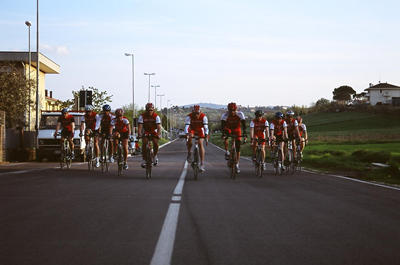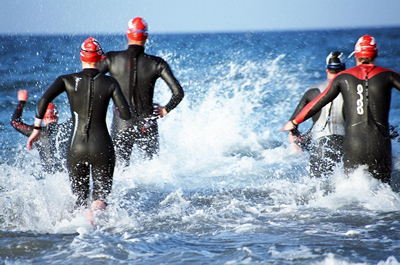Introduction
You may be thinking about your first ultra endurance event*, ironman triathlon, adventure race, Etape or ultra marathon. Amazing, that just off the top of my head I came up with quite a solid list of events, which are designed to test the limits of human endurance. What’s even more amazing these events are not just completed by superhuman beings, they are completed by you and your buddy in the office working 40–50 hrs a week and hey, no afternoon snoozing! That’s superhuman.
*Ultra endurance is determined as an event lasting longer than 4hrs.
Trial and error
It may not be the smartest way to observe this area of human physiology; however I first came across the phenomena know as cardiovascular (CV) drift** when I completed my first middle distance tri. Like most, I had worried about completing the whole event fist time around, so set myself a target heart rate to work at. During the run section I looked at my HR to find it was higher than I was expecting for the mile pace I was setting and my perceived exertion. I then slowed my running to the HR levels I had set prior to the start of the race, subsequently my mile pace slowed along with my half marathon time.
As a coach, I have investigated this CV drift phenomena and although it is not yet fully understood by sports physiologists, their studies have given me a much better understanding as to why my HR monitor lied to me that day.
**A slow but steady increase in heart rate (HR) is witnessed during prolonged endurance exercise at constant work rate for around 3–3.30hrs.
Don’t listen to the lies
Why will your HR monitor be lying to you? Basically, if you are running at a steady state, say 160bpm at 7.30 min mile pace for over an hour (up to about 3hrs), your heart rate will start to “drift” up, to say 166bpm, while maintaining the same 7.30 run pace. Because you are so disciplined with your training, you look down at your HR monitor and it’s registering the extra number of beats. You then think “I have to stick to my HR pace”, you slow down until back to your predicted steady state HR of 160bpm, in turn slowing your running to 8 min mile pace (hypothetically) and BAMB you never achieve you predicted race finish times.
Tip: Be aware some studies have reported CV drift from 15 – 33 beats.min-1 but read on to find out how to limit it.
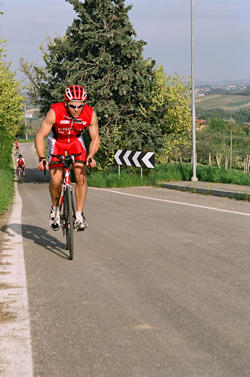
Importantly, if you train with your HR monitor over long distances and stick to your steady state HR parameters, the CV drift will ultimately have a detrimental effect on your long term preparation and you may never reach optimum performance. Understanding why CV drift occurs will help you prepare for racing better, thus achieving your potential.
The Big picture
After trawling through papers on triathlon performance etc, it is clear that ultra endurance triathlon needs further investigation. Therefore, I have also taken into consideration studies conducted with our single disciplined cousins of swimming, cycling and running and will present my findings from across all endurance sports related to triathlon.
CV drift appears to be caused by a progressive decrease in stroke volume (the amount of blood leaving the heart with each contraction), thus an increase in HR is required to maintain cardiac output during endurance events. A number of studies have shown that CV drift is caused by dehydration and reduced fluid/electrolyte replacement. One other factor related to CV drift is blood glucose levels (carbohydrate, once broken down), therefore the evidence is clear that optimal re-fuelling and energy replacement are vital in reducing the effects of the drift. Get those TORQ bars and TORQ energy drink in guys and gals!
Reduce CV Drift
To reduce the effects of CV drift you simply have to reduce or, as much as possible, limit the amount of stress you place on your system during competition and training. For example, in the last article on ironman preparation I mentioned gastric emptying*** and how the speed of this emptying is determined through a number of different stimuli including; particle size, dietary fibre, meal volume, meal temperature and osmolality. It therefore makes total sense to do as much as we can to speed up this emptying process and we can do this by reducing the stress or energy (blood shifted from working muscles to gut in this case) required in digesting food stuff while competing. Furthermore, this can be limited by taking in/eating smaller amounts (more often than larger) and chewing it for longer.
***This quite simply is the process of getting fuel into our blood stream and to our working muscles.
Tip: Remember there are enzymes in our saliva which help break down carbohydrate, so chew your TORQ bars longer to utilise them.
If you look at the packaging of gel or most energy bars you will see that they require quite a lot of water (around 200ml) to help in digestion. If these levels are not met you are again placing undue stress on your body and will enter into dehydration.
As mentioned above, a further area to be aware of is the hydration and body temperature. As you know when we exercise (especially in heat) we get progressive water loss through sweating. When the body’s core temperature rises it causes a redistribution of blood to the periphery. Again, these actions cause a reaction, as blood is taken from the one place it is needed, the working muscles in cycling and running.
Be aware… if you are completing a half ironman or full ironman race and are spending more than average (slower times) amount of time completing a race, there is a greater possibility of hyponatraemia**** (an extracellular sodium imbalance) this is where they are basically over drinking or ingesting too much fluid.
****Read Stephanie MacLean’s article on hyponatraemia at www.optimaracing.com
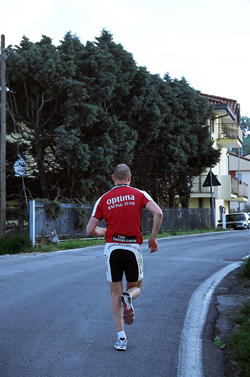
Now for a little twist
As Olympic and middle distance athletes you know that your HR may drift steadily upwards over the first 3 – 4hrs, known as cardiovascular drift. So what happens in Ultraendurance races of 4hrs or more?
It has been shown that over time, intensity declines as a results of substrate shifts (increased fat use relative to carbohydrate) and neuromuscular fatigue by 6 – 7%. This in turn will show a decrease in heart rate leading to a downward cardiovascular drift. Again this process can be limited by correct re-fuelling, hydration and electrolyte homeostasis.
Please note. Only the naturally flavoured TORQ energy drinks contain electrolytes (sodium, chloride, potassium, magnesium and calcium). The neutral versions do not.
When an athlete is competing for over four hours and ultra endurance events lasting days, with very limited sleep (adventure racing and Sahara type marathons) neuromuscular fatigue starts to play a much bigger part (ironman shuffle!). This fatigue leaves a lot to be desired with regard to economy of motion and is a far cry from the perfect running patterns of the 100/200m sprinter. Try to hold good form over the latter part of your race.
Tip: Don’t fret if you are not a strong swimmer in ironman triathlon; just remember to be efficient with your energy while swimming (i.e. don’t panic) as it is only 10% of the overall triathlon time. Moreover, the swimming leg in triathlon has demonstrated a non-significant relationship with overall race performance.
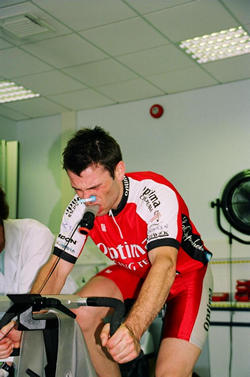
Take drift out of the equation
The only way to know how hard we should be pushing ourselves during the bike section of a triathlon of any distance, but the longer we go the more important it becomes, is to use a Power Meter. There are different types available including Powertap, SRM or Ergomo. TORQ are huge advocates of the Powertap system being used by Floyd Landis in this year’s Tour De France. It really is crazy how many triathletes spend thousands of pounds on bikes/wheels and still do not use power meters. The effect the bike and wheels will have on your performance is only a small part of the picture, however the return for your pound gained from using and understanding power meter and power is huge. More on this in the next article.
Conclusion
I have presented lots of information here, but if I know my audience well, good preparation is part of most multisport/endurance athletes lives and hopefully you will now have superior preparation. CV drift will occur, but now that you are aware of it and know how to limit it, your actual race times should not be “drifting” away. Just remember to practice your eating/ re-fuelling patterns and try to keep the body temperature down. Basically limit the amount of undue-stress you place on your body. The body is stressed enough just doing the type of distance and races you guys are asking of it, be kind to it when you can.
If you would like any further information or have any questions regarding this article please email the author james@optimahealth.co.uk
Further reading:
1. Bompa, T. O., (1994). Theory and Methodology of Training. Iowa: Kendall and Hunt.
2. Boudet, G., Albuisson, E., Bedu, M., Chamoux, A., (2004). Heart rate running speed relationships during exhaustive bouts in the laboratory. Can J Appl Physiol. 29(6): 731 – 742
3. Farber, H. W., Schaefer, E. J., Franley, R., Grimaldi, R., Hill, N. S., (1991). The endurance triathlon: metabolic changes after each event and during recovery. Med Sci Sports Exerc. 23(8): 959 – 965.
4. Farber, H. W., Arbetter, J., Schaefer, E. J., Dallal, G., Grimaldi, R.., Hill, S., Hill, N., (1987). Acute metabolic effects of an endurance triathlon. Annals of Sports Med. 3: 131 – 138.
5. Gulbin, J. P., Gaffney, T., (1999). Ultraendurance triathlon participation: Typical race preparation of lower level triathletes. The Journal of Sports Medicine and Physical Fitness, 39(1): 12-15.
6. Larsen, P. B., Rhodes, E. C., (2001). Factors affecting performance in an Ultraendurance triathlon. Sports Medicine, 31(3): 195 – 209.
7. Larsen, P. B., Rhodes, E. C., Langill, R. H., (2000). The effects of 3000m-swimming on subsequent 3-h cycling performance; implications for ultrendurance triathletes. Eur J Appl Physiol. 83(1): 28-33.
8. McArdle, W. D., Katch, F. I., and Katch, V. L. (2001). Exercise Physiology, Energy, Nutrition, and Human Performance. USA: Lippincott Williams and Wilkins.
9. O’Tool, M. L., Douglas, P. S., (1995). Applied physiology of triathlon. Sports Medicine, 19(4): 251-267.
10. O’Tool, M. L., Douglas, P. S., Hillier, W. D., (1998). Use of heart rate monitors by endurance athletes: Lessons from triathletes. J Sports Med Phys Fitness. 38(3): 181 – 187.
